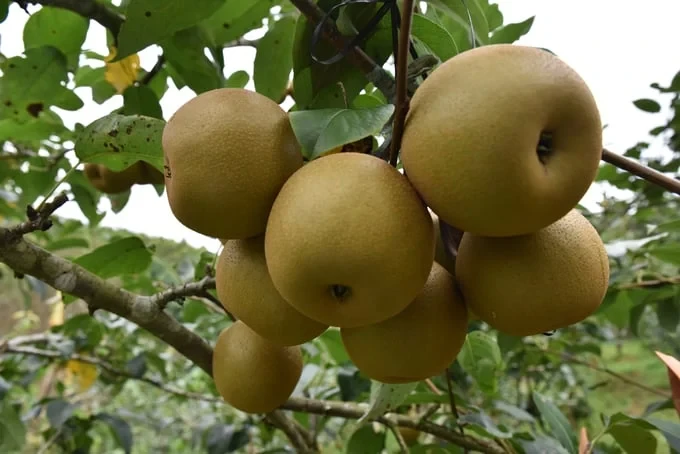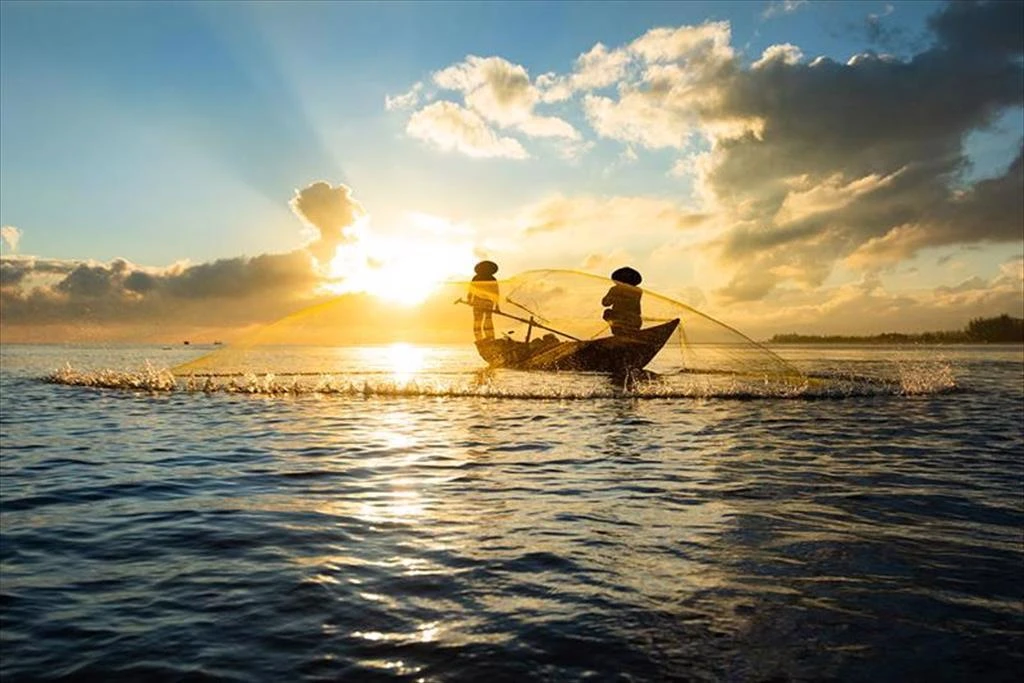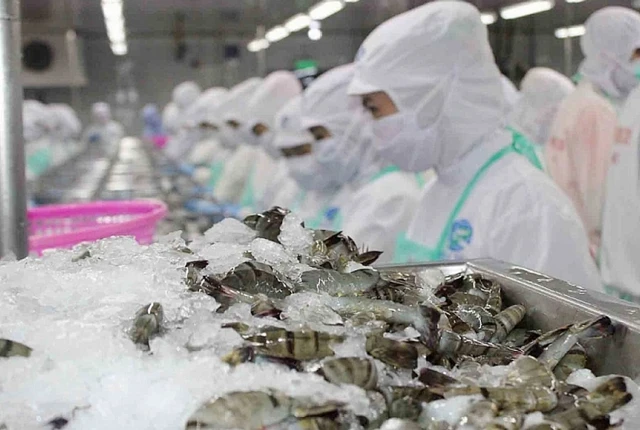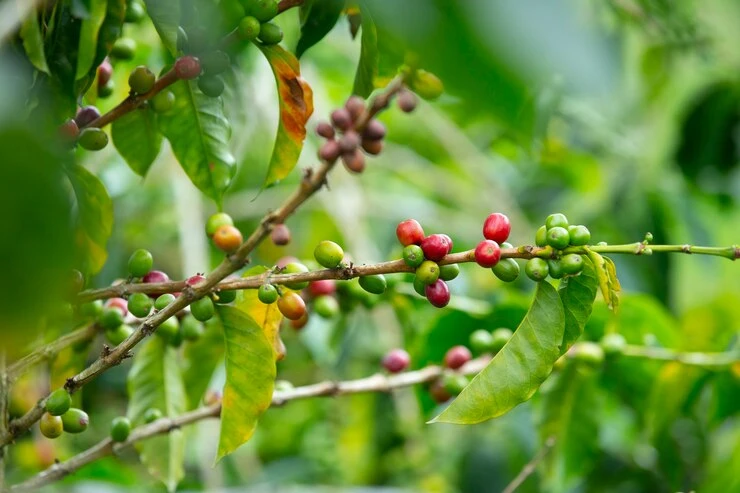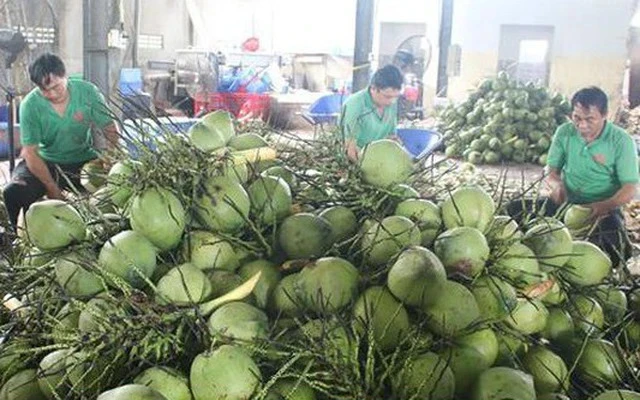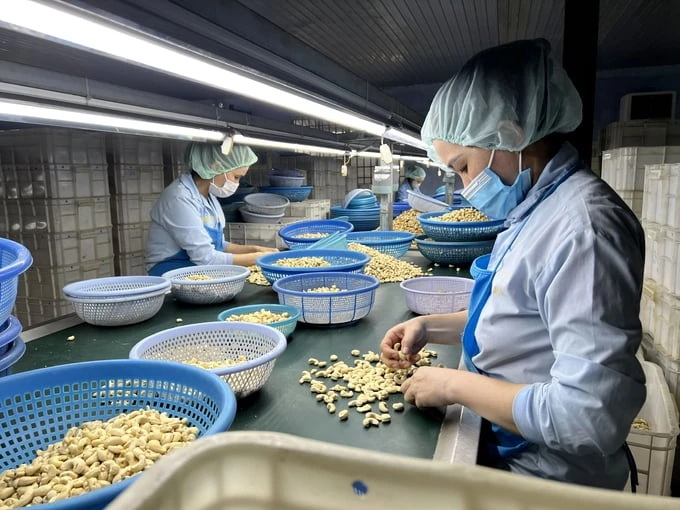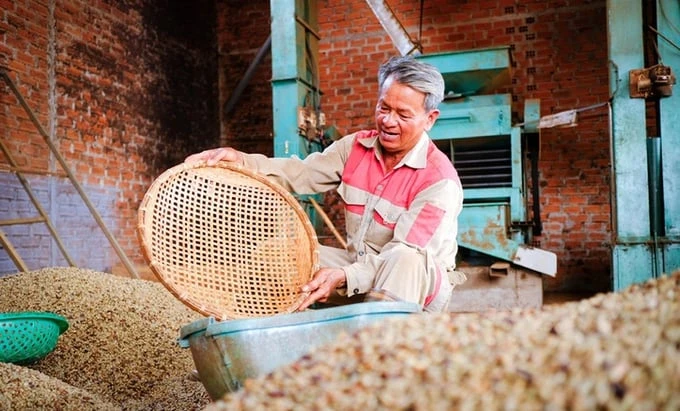According to Mr. Hai, temperate fruit trees were imported into Vietnam from various sources, initially from France. Mr. Nguyen Cong Tan showed great interest in temperate fruit trees from France when he was the Minister of Agriculture and Rural Development. During his time as Deputy Prime Minister, around 2003 - 2004, France had a cooperation program with Lao Cai province. It established demonstration gardens with many valuable temperate fruit tree varieties in Ta Phin in Sa Pa and the Temperate Fruit and Vegetable Farm in Bac Ha.
"France and Australia have shown great interest in planting temperate fruit trees in Vietnam and have good relations with us. They introduced various types of peaches, apricots, plums, and persimmons to Vietnam. After a period of experimentation, apart from a few varieties with low chilling unit (CU) requirements that could bloom under Vietnamese conditions, such as the Maraviha and Missour peach varieties, many temperate fruit tree varieties from France were not very suitable because they originated from places with much colder climates.
Meanwhile, the varieties imported from Australia, mainly through cooperation within the ACIAR project framework, had a higher success rate. Peach varieties such as Tropicbeauty and the nectarine Sunwright and plum varieties like October Blood, Gulfgold, and Rubenal were able to flower and bear fruit well in some experimental planting locations and were accepted by local people, though the area under cultivation remains modest," said Mr. Hai.
Mr. Hai recalled: "Mr. Nguyen Cong Tan always worked with the spirit of putting the nation first. He often traveled abroad and, being passionate about agriculture, would bring back good varieties as souvenirs. Furthermore, he was proactive in finding ways to introduce new varieties, not just plants and animals but also new techniques. Once, after returning from Italy, he told Professor Tran The Tuc, who was then the Director of the Institute of Vegetable and Fruit Research, and me to go immediately to Sicily to see how the Italians grow oranges and tangerines on rocky mountains."
We saw a vast area of oranges and tangerines planted on gently sloping rocky mountains, of course, the type of rock in the process of weathering. Trees were growing well and bearing attractive fruit. When Mr. Phan Van Khai was Prime Minister, during a visit to the Institute of Vegetable and Fruit Research, he told the scientific staff that Mr. Tan was diligent in bringing new things back from abroad.
"At our institute, Mr. Tan introduced a series of new varieties, not just temperate fruit trees but also oranges, tangerines, sunflowers for oil, soft-branch tea, and African ornamental palm trees. When introducing new varieties for experimentation, success, and failure are naturally expected as they are imported plants, some suitable and some not. However, regarding his dedication, Mr. Tan excelled at bringing in new varieties. When bringing temperate fruit trees such as peaches and pears to the Temperate Tree Research Center in Sa Pa, he often reminded his assistants to inform our institute to go and inspect immediately. Unfortunately, some trees there no longer exist due to issues with both care and protection.
Moreover, we made several trips to inspect when introducing some orange and tangerine varieties to be planted in an isolated area like Cat Ba Island (Hai Phong). One variety was quite suitable and well-received by the local people, but it has only developed to a limited extent," shared Mr. Hai.
Returning to when Mr. Nguyen Cong Tan was the Minister of Agriculture and Rural Development, Vietnam was focused on ensuring food security and thus concentrated on cultivating staple crops and a few fruit trees like pineapples and oranges. He was always concerned about how Vietnam could export fruits and vegetables worth 1 billion USD (at that time, exports were about 200 to 300 million USD per year, now reaching 6 billion USD per year), with temperate fruit trees contributing a part.
Mr. Hai analyzed that temperate fruit trees are divided into three groups: those requiring high chilling units (many hours of cold) like varieties from China, grown near Beijing with very low temperatures and good quality; those requiring moderate chilling units; and those requiring low chilling units (few hours of cold). In Vietnam, the focus should mainly be on varieties requiring moderate and low chilling units, similar to those from Taiwan or southern China.
